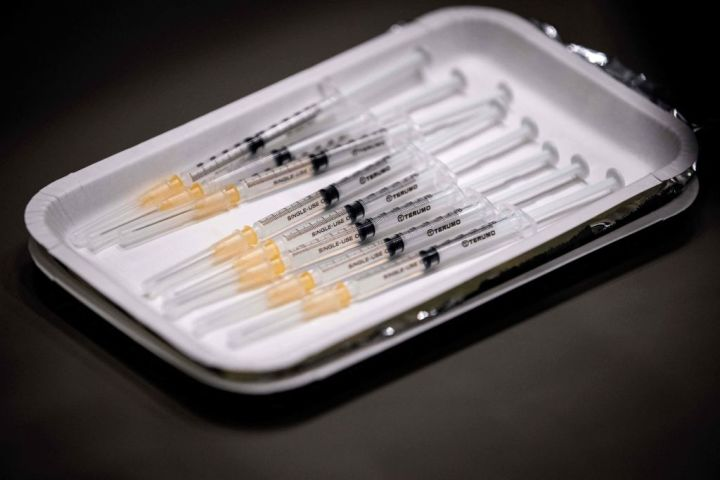
COVID-19:中国不活化ワクチン、オミクロンに効果低い:Nature(動画):
COVID-19:Chinese inactivated vaccine,less effective against Omicron:
COVID-19:中国灭活疫苗,对 Omicron 菌株的效果较差:自然
英学術誌「ネイチャー」:
1月13日付の記事:
「中国が開発した不活化ワクチンのオミクロン株に対する効果は低い」と指摘した。
中国は、ワクチン外交の一環として、不活化ワクチンを発展途上国に供与している。
しかし「中国製ワクチンの再評価が避けられない」との見方を示した。
オミクロン株に対する中和抗体:
中国シノバック製・新型コロナワクチンを25人に2回接種した。
血液を分析した結果、
「オミクロン株に対する中和抗体が全く検出されなかった」という。
香港大学:
香港大学の研究チームが、昨年12月に発表した論文を引用して伝えた。
不活化ワクチンは効果なし:
「不活化ワクチンが、多数の実験でオミクロン株にはあまり効果がない」と指摘した。
3回目接種の効果:
- 不活化ワクチンを3回目接種しても、
- 他のワクチンに比べて、
- 効果が顕著に落ちることも明らかになった。
不活化ワクチンを接種した中和抗体の数値が非常に低い。
「不活化ワクチンを患者群に3回接種をしても、改善されなかった」という。
メッセンジャーRNA ワクチン
組換えタンパク質ワクチンいっぽう、
- 欧米製のメッセンジャーRNA、
- 組換えタンパク質ワクチンなどは、
「3回目の接種でオミクロン株に有意な効果」を示した。
ネイチャーの主張:
今回の実験結果をもとにネイチャーは、不活性ワクチンの役割を再評価することを促した。
大紀元 エポックタイムズ
https://www.epochtimes.jp/2022/01/85132.html
Omicron thwarts some of the world’s most-used COVID vaccines
The world’s most widely used COVID-19 vaccines provide little to no protection against infection with the rapidly spreading Omicron variant, laboratory evidence suggests.
Inactivated-virus vaccines
contain SARS-CoV-2 particles that have been chemically treated to make it impossible for them to cause an infection.Stable and relatively easy to manufacture,
such vaccines have been distributed widely as part of China’s global vaccine diplomacy, helping them to become the jab of choice in many countries.
But a multitude of experiments show that they are consistently hobbled by Omicron.
Many people who receive two jabs of an inactivated vaccine fail to produce immune molecules that can counter Omicron transmission.
And even after a third dose of an inactivated vaccine, an individual’s levels of ‘neutralizing’ antibodies,
which provide a potent safeguard against viral infection of cells, tend to remain low.
A third shot of another type of vaccine, such as those based on messenger RNA or purified proteins,
seems to offer better protection against Omicron.
The findings are prompting many scientists and public-health researchers
to re-evaluate the role of inactivated vaccines in the global fight against COVID-19.
“At this stage, we have to evolve our ideas and adjust our vaccination strategies,” says Qiang Pan-Hammarström,
a clinical immunologist at the Karolinska Institute in Stockholm.
Billions served
Inactivated vaccines
were instrumental in the campaign for worldwide vaccine coverage last year.They include those made by China’s Sinovac and Sinopharm,
which together account for nearly 5 billion of the more than 11 billion COVID-19 vaccine doses delivered globally so far,according to numbers compiled by data-tracking firm Airfinity in London (see ‘Many shields against COVID-19’).
More than 200 million doses of other inactivated shots such as
India’s Covaxin,
Iran’s COVIran Barekat and Kazakhstan’s QazVachave also been delivered.
But an early sign that
inactivated vaccines might not hold up to Omicron came in December,when researchers in Hong Kong analysed blood from 25 recipients of the two-dose CoronaVac vaccine,
made by the Beijing-based company Sinovac.
Not a single person had detectable neutralizing antibodies against the new variant
— raising the possibility that all the participants were highly vulnerable to Omicron infection1.
https://www.nature.com/articles/d41586-022-00079-6